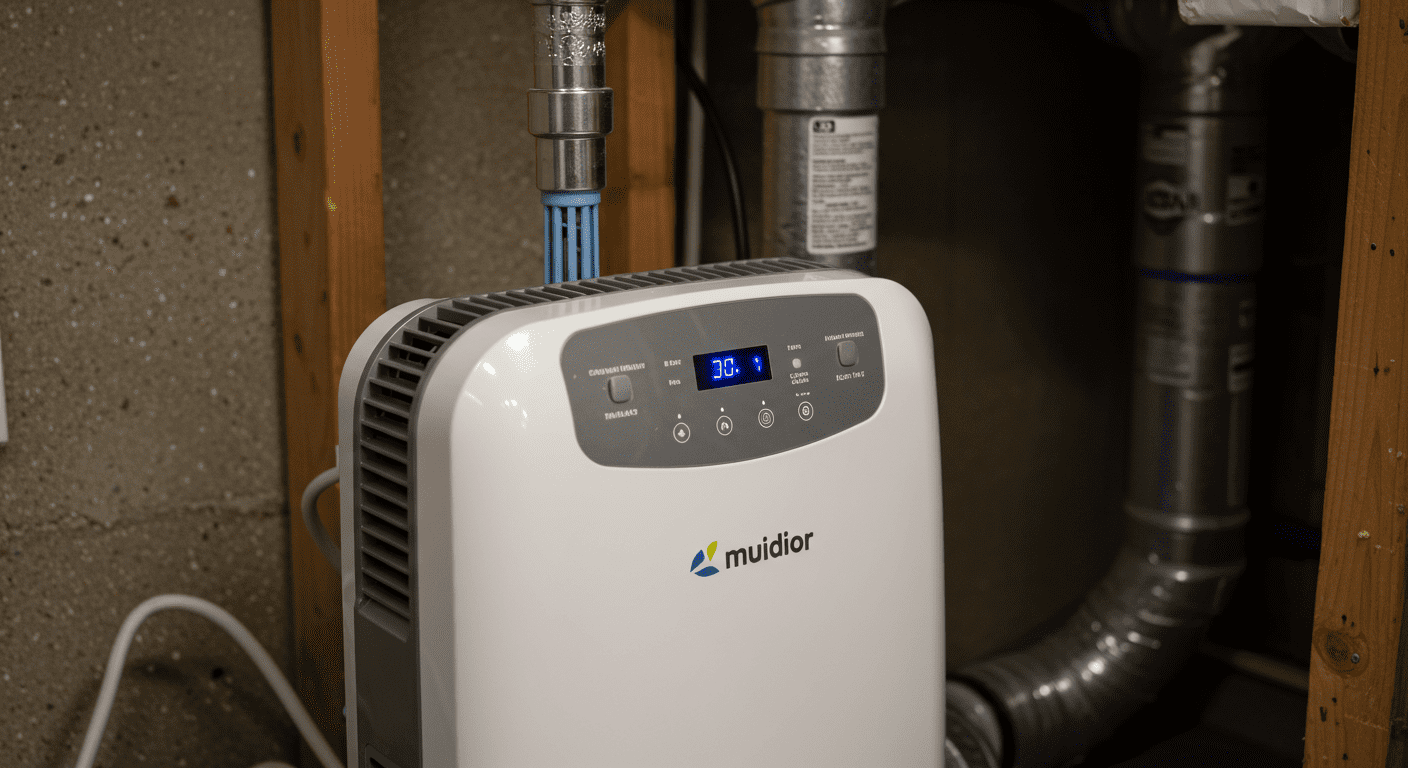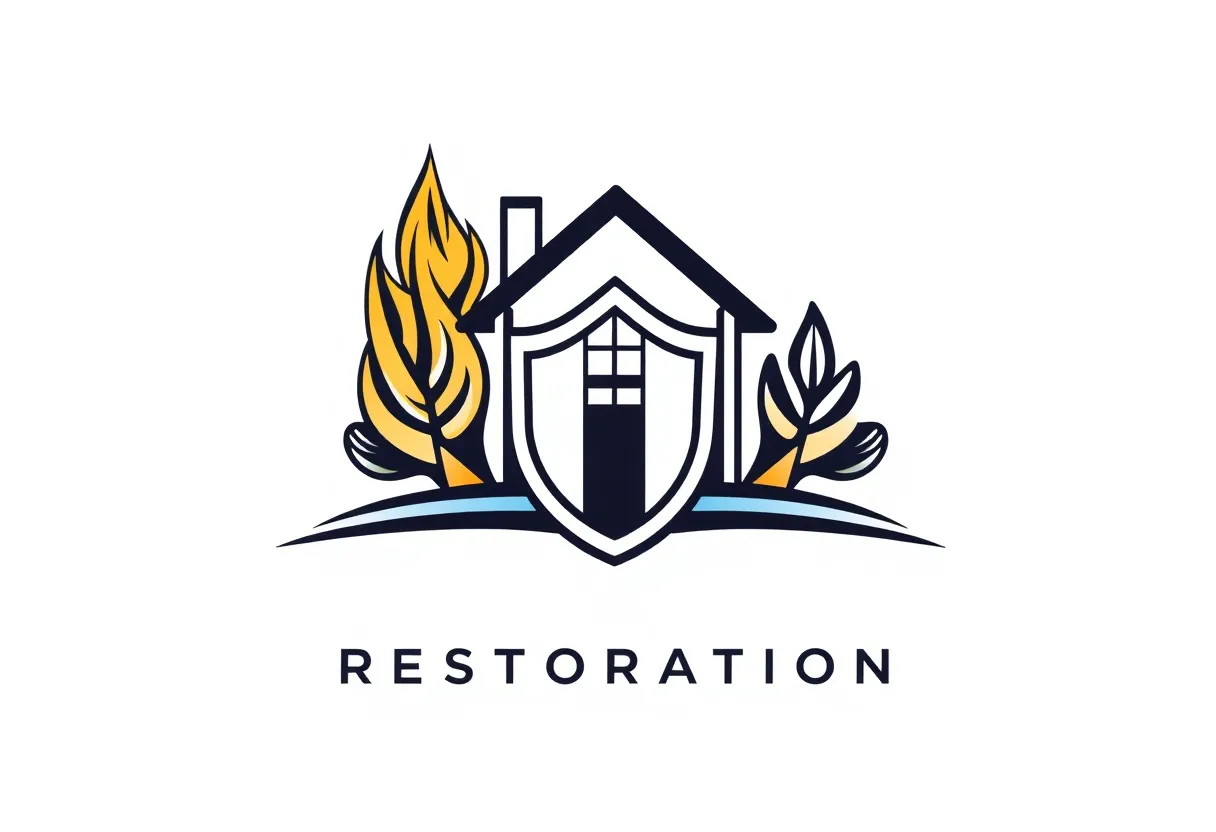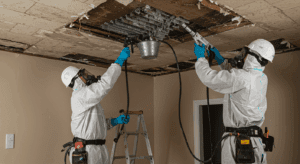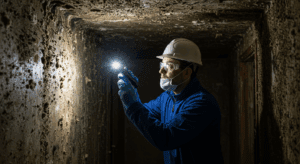Water damage and mold are two of the most common and challenging issues homeowners face. From structural damage to health risks, their impact can be significant if not addressed promptly. This guide provides a detailed overview of water damage and mold, covering prevention, insurance coverage, and restoration solutions.
Understanding Water Damage and Mold
What Causes Water Damage?
Water damage occurs when excess water infiltrates your home, often due to plumbing leaks, natural disasters, or faulty appliances. Common culprits include burst pipes, roof leaks, and flooding from heavy rains. If not addressed quickly, water damage can weaken structural integrity, ruin personal belongings, and create an environment conducive to mold growth.
The Dangers of Mold Growth
Mold thrives in damp, humid conditions and can begin growing within 24-48 hours of water exposure. It not only damages walls, ceilings, and furniture but also poses serious health risks. Exposure to mold spores can cause respiratory issues, allergic reactions, and even exacerbate asthma symptoms. Addressing mold growth promptly is crucial to maintaining a safe and healthy living environment.
Insurance Coverage for Water and Mold Damage
What Does Homeowners Insurance Cover?
Homeowners insurance typically covers sudden and accidental water damage, such as damage caused by a burst pipe or an appliance malfunction. However, it often excludes damage resulting from neglect, such as long-term leaks or poor maintenance. Mold damage coverage varies by policy and may require additional endorsements. It’s essential to review your insurance policy to understand what is and isn’t covered.
Filing Claims for Water and Mold Damage
When filing a claim for water or mold damage, documentation is key. Take photos of the affected areas, keep receipts for any repairs, and notify your insurance provider immediately. Be prepared to provide details about the cause of the damage and any steps you’ve taken to mitigate further harm. Working with a public adjuster or restoration company can also streamline the claims process.
Effective Mold Prevention and Remediation
Steps to Prevent Mold Growth
Preventing mold starts with controlling moisture levels in your home. Use dehumidifiers in damp areas like basements, fix leaks promptly, and ensure proper ventilation in bathrooms and kitchens. Regularly inspect your home for signs of water damage, such as discoloration or a musty odor. By addressing these issues early, you can significantly reduce the risk of mold growth.

Professional Mold Removal Services
If mold growth is extensive, professional remediation services are often necessary. Experts use specialized equipment and techniques to safely remove mold and prevent its recurrence. They also identify and address the underlying cause of the moisture problem. Hiring a certified mold remediation company ensures the job is done thoroughly and effectively.
Choosing the Right Restoration Company
Key Factors to Consider
Selecting the right restoration company is critical to ensuring successful water damage and mold remediation. Look for companies with certifications from organizations like the Institute of Inspection, Cleaning and Restoration Certification (IICRC). Check reviews, ask for references, and verify that the company is licensed and insured. A trustworthy restoration company will provide a detailed plan and transparent pricing.
Questions to Ask Before Hiring
Before hiring a restoration company, ask about their experience with similar cases, the methods they use, and the timeline for completion. Inquire about warranties for their work and whether they assist with insurance claims. Clear communication and a thorough understanding of the process will help you make an informed decision.
For homeowners in Newark, NJ, seeking expert solutions, check out Top Mould Removal Companies Near You in Newark, NJ: Expert Solutions for a Mold-Free Home.
Water damage and mold can be daunting challenges, but with the right knowledge and resources, they can be effectively managed. By taking preventive measures, understanding your insurance coverage, and working with experienced professionals, you can protect your home and health from the adverse effects of water and mold damage.




